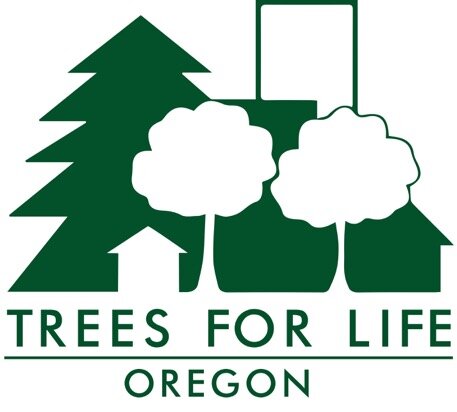Cooling Vulnerable Residents through Better Building/Tree/Street Design
Low-income areas of eastside Portland are seeing intense development, including new multi-unit housing that often displaces existing large trees. Newly developed sites with increased pavement and fewer trees raise temperatures, which we know from last summer's heat dome can be lethal to residents.
But redesigning the configuration of trees and multi-family housing can help keep building residents cooler, said PSU Professor Vivek Shandas at a November 2021 webinar (at 23:17 of the video). He and co-researchers used a computer model to simulate the variations in temperature produced by different building/tree scenarios. One design, in particular, is most effective. It's labeled "6S" on the graphic below.
This option shows the building placed around the site perimeter, with green space in the middle, together with a lighter colored roof and adjacent street surfaces. This finding indicates that “We can increase density while maintaining pre-development temperatures,” said Shandas. “These are ways to cool public housing projects because a lot of these buildings are being constructed in communities that face disproportionate exposure to heat,” he explained. These findings are based on computer models applied to Portland as well as to Washington, D.C.; Richmond, Virginia; Seattle, and Los Angeles.
In the same webinar (at 26:47 of the same video), Professor Shandas referred to another project he's working on, in Los Angeles, which examines how to green a neighborhood that has never had green before. He and his colleagues have developed a three-tiered “plant priority model” to guide a process for meeting this challenge. Tier 1 comprises the easy wins that aren’t hard to sell to policymakers--where space is available for trees and they are planted, with sufficient soil volume to thrive. Tier 2 is harder because it involves tearing up concrete and changing policies, he said. Tier 3, the most challenging and costly, requires a fundamental shift in infrastructure by redesigning or newly designing streets and sidewalks to include features like diverters, bus bulbs, and other curb extensions that could accommodate green space.
Linking his points to Portland, Professor Shandas referred to policies like PBOT’s Pedestrian Design Guide, which has the potential to redesign neighborhoods. In fact, Trees for Life Oregon is deeply concerned that Portland’s newly updated Pedestrian Design Guide may well lock low-income neighborhoods now seeing intense development into right-of-ways too small to hold trees large enough to mitigate heat-island effect.
In early January Trees for Life Oregon will report on Vivek Shandas's December 14, 2021 talk at the Kennedy School, during which he'll present some preliminary findings from his study of Portland's canopy changes between 2014 and 2019.

